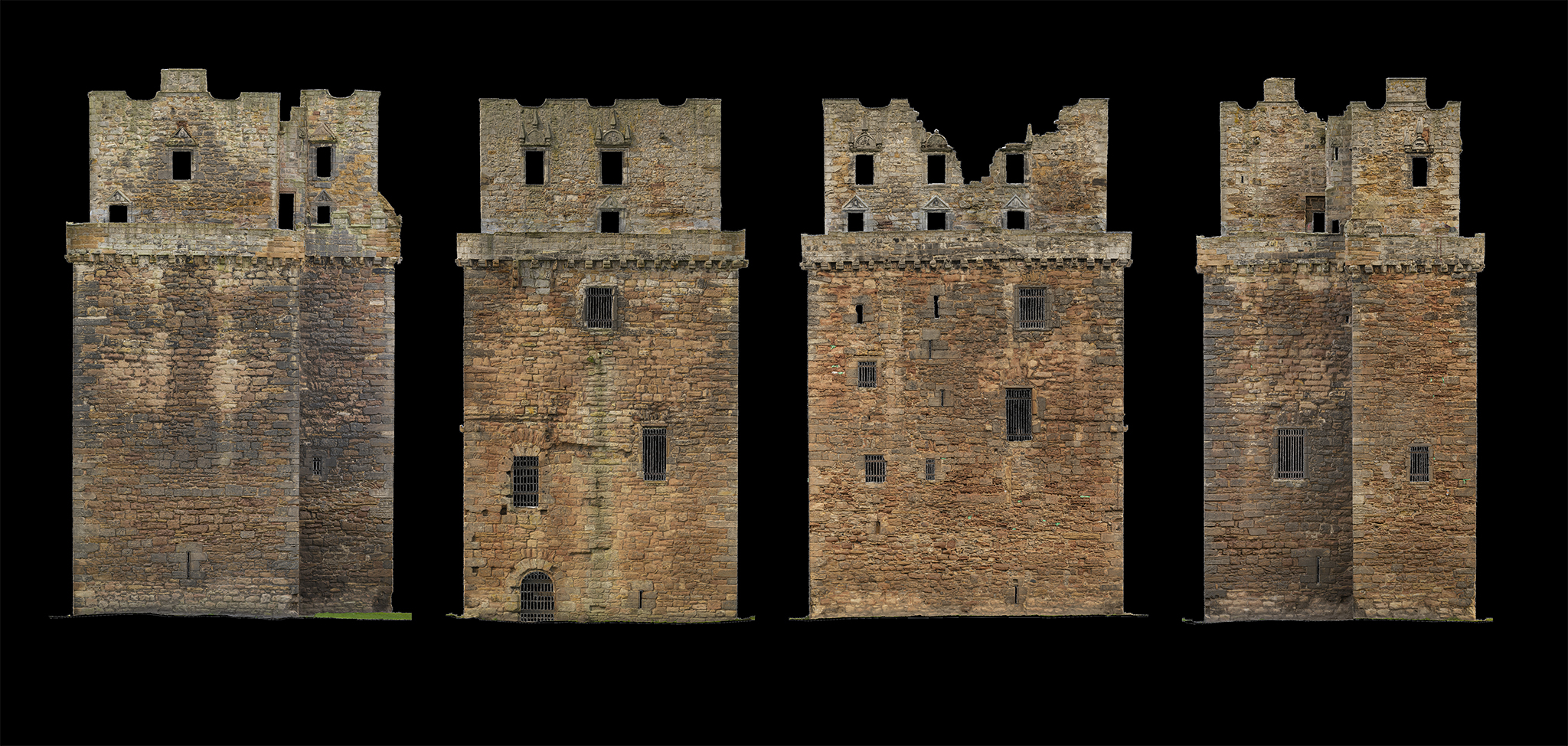In Prestonpans, East Lothian, stand the ruins of Preston Tower, a 15th century tower house with 17th century extensions, that was burnt and rebuilt several times during the Medieval period.
In 2022, AOC Archaeology’s Digital Heritage Team were commissioned to create a 3D model of the Tower to aid the Historic Building Recording carried out by CFA Archaeology as part of the Preston Tower Restoration Project.
Architectural features identified through this type of survey have given a greater understanding of the building’s history and evolution over time, as well as providing hints to features that no longer survive.
A Brief History
Preston Tower was originally a four-storey tower built in the 15th century by Sir Robert Hamilton, who inherited the estate in c.1460. During the 1544 Anglo-Scottish conflict known as the ‘rough wooing’, the tower was attacked and burned by the Earl of Hertford, who was acting on the orders of King Henry VIII of England. In the early 17th century, the tower was rebuilt and extended upwards by two storeys, but by 1650, it had been burnt again, this time by Cromwell’s forces after the Battle of Dunbar. Although Preston Tower was rebuilt a third time, it survived only until 1663 when it was destroyed by an accidental fire. After this fire, the tower was abandoned by the Hamilton family for the nearby Preston House and has remained uninhabited since.
The Original Tower
The original Preston Tower was constructed in red sandstone with plain but thick walls typical of 15th century Scottish tower houses. Internally, it contained a vaulted basement with an entresol (loft), a first-floor vaulted hall, and a large second-floor chamber. A hatch in the hall floor provided the only access for servants to the basement and entresol, while spiral staircases led to the upper floors.
A pit prison and guard room were located in an outshot from the basement, a placement thought to be unique to this tower. The second floor likely housed the kitchen, evidenced by a low-arched kitchen fireplace and a wall recess that might have housed a salt press. Although now unroofed, the original tower probably had a pitched roof, with a habitable attic area below the rafters.
The Scars of the Past
Although Preston Tower has been destroyed and modified on several occasions, scars left on the building give a tantalising hint towards features that are no longer present. The main entrance to the Tower was located on the first floor level and would have been accessed by a timber stair, the only evidence of which are the holes that would have supported the walkway. Corbels (projecting stones) above the doorway also indicate it would have had a covered roof. While the main entrance can be seen on the east, a door jamb on the south side indicates that the original entrance was located here and later blocked during one of the rebuilding phases.
A Violent Past
At parapet level above the main entrance, are the remains of a projecting stonework feature which likely had a defensive function. An early interpretation suggested it may have supported a wooden platform used to guard the main entrance, but no other structural remains survive to support this. Another possibility is its use a machilocation, a gap between the supporting stones of the parapet which would have allowed stones, other projectiles, or burning materials to be dropped on an attacking force. Such a feature may have been used during either or both of the battles that ended in the burning of the Tower.
Recording the Tower
The digital recording of Preston Tower was carried out using a technique called photogrammetry, sometimes referred to as Structure from Motion (SfM). Hundreds of photographs were taken of the building at different but overlapping angles and scales. To get good coverage of the entire structure, this involved flying a drone around the tower and inside the large open chamber. Specialist software was then used to combine the images and stitch together the models for the exterior and interior elements. The process also allowed flat images to be produced for the building elevations to aid in the conservation and restoration of the tower.
https://www.youtube.com/watch?v=6oTurM7gESE














